12 Depression Glass Dishes That Brighten Any Display
Few collectibles bring the same cheerful energy to a room as Depression glass. Known for its soft pastel colors and vintage charm, it remains a favorite among those who enjoy decorating with history. Each dish reflects a time when beauty was made accessible during hardship, giving it a story that feels timeless. Whether displayed in a cabinet or used for serving, these glass pieces never fail to catch the light beautifully.
This post may contain affiliate links, which helps keep this content free. Please read our disclosure for more info.
Pink Mayfair Open Rose Dinner Plate by Hocking Glass
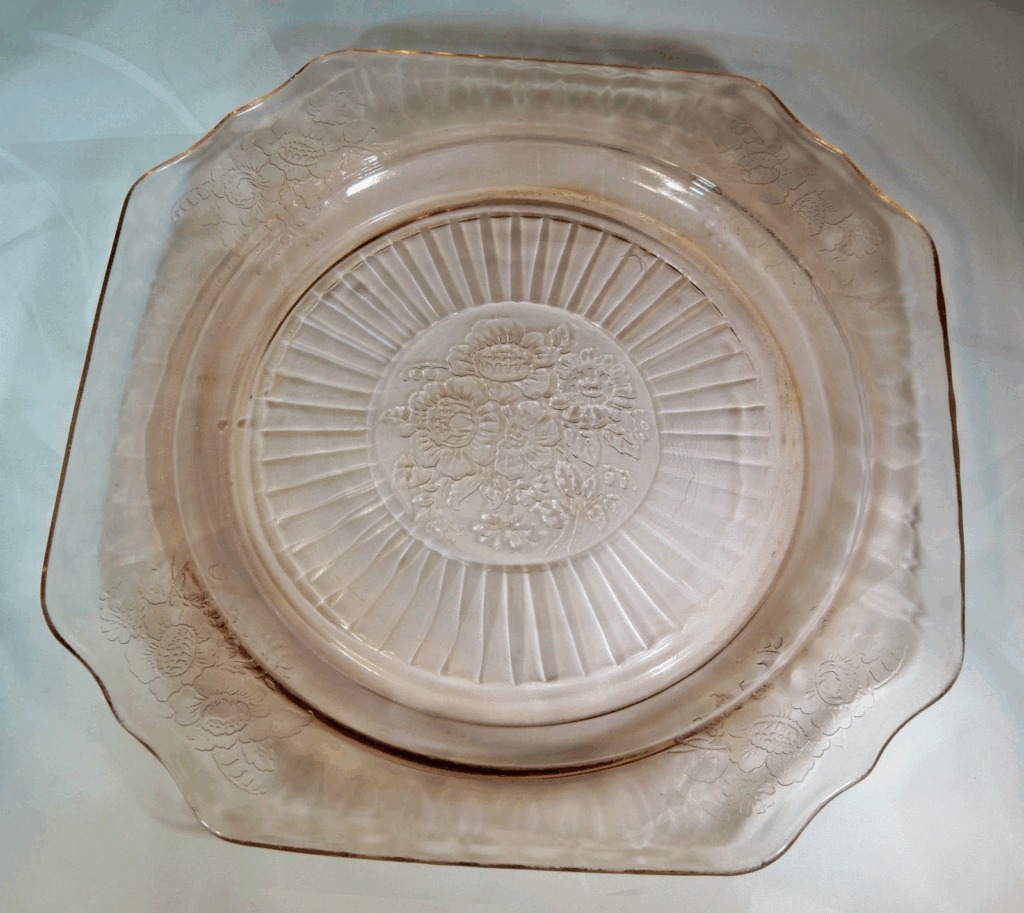
Produced between 1931 and 1937, the Mayfair Open Rose pattern is one of the most recognized designs from Hocking Glass. Its delicate pink color and raised floral detailing make it stand out in any vintage display. Many collectors love how the plate catches the light, creating a soft and romantic glow. This piece remains easy to pair with other patterns from the same era. Depending on condition, its market value today ranges from $25 to $45.
Collectors often use this dish as a centerpiece due to its gentle charm. The floral pattern complements both rustic and formal table setups, bringing a sense of warmth. The glass remains durable despite its age, showing the quality of Depression-era craftsmanship. Finding a full set can be challenging but rewarding for collectors. Its charm continues to attract both experienced and new enthusiasts of vintage glassware.
Green Princess Cake Plate by Hocking Glass
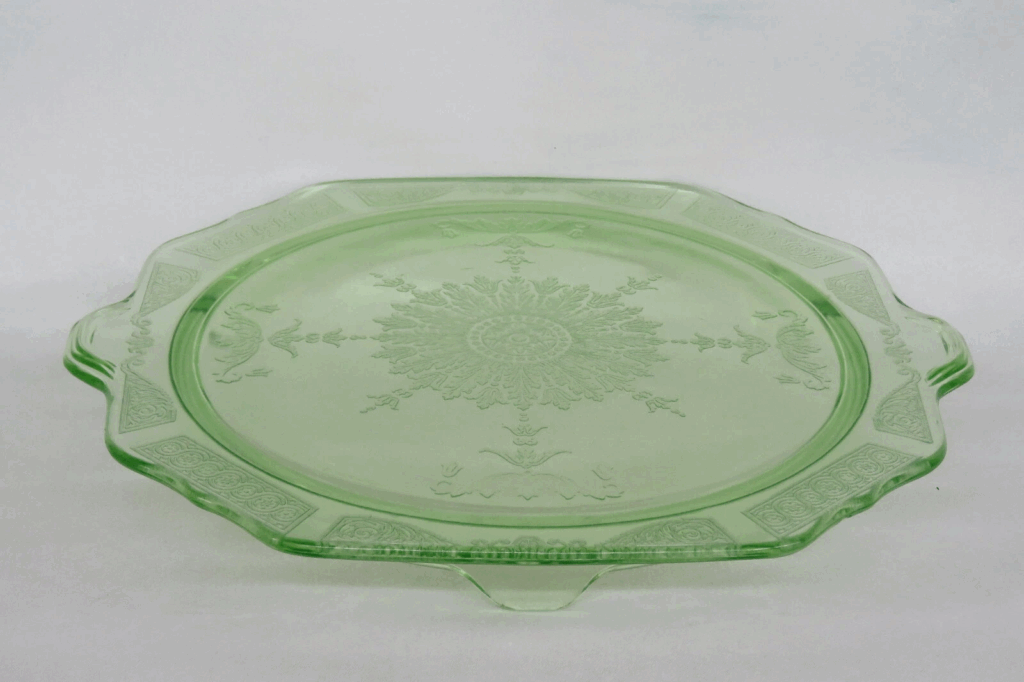
Made from 1931 to 1935, the Princess pattern in soft green is admired for its geometric details. The glass has a transparent yet rich tint that adds a pleasant brightness to any collection. Its pressed pattern features intricate shapes that shimmer under light. Many collectors display it on stands or in china cabinets where its color can shine. In today’s market, the plate is valued between $40 and $60.
Its smooth texture and classic look make it ideal for both display and occasional use. Collectors appreciate how the green shade blends beautifully with floral or vintage-themed décor. Although delicate, the glass has maintained its clarity through decades. This piece remains one of the most collectible examples of early Depression glass. The Princess plate continues to bring charm to any dining or display arrangement.
Yellow Madrid Serving Bowl by Federal Glass
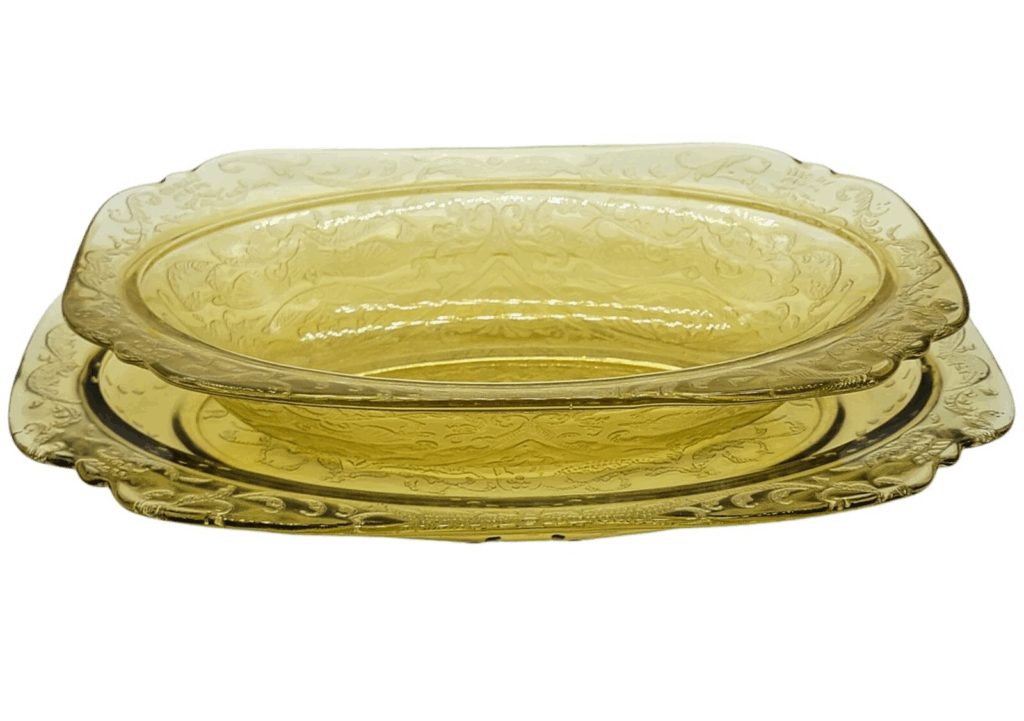
The Madrid pattern, created between 1932 and 1939, is known for its warm yellow hue and floral etching. The serving bowl stands out with its gently curved shape that catches natural light beautifully. Many collectors enjoy its bright tone that livens up a room. The design reflects a simple elegance typical of the Depression era. Prices usually fall between $30 and $50 depending on condition.
This bowl works well as both a decorative piece and a functional serving dish. The subtle details give it an appealing texture that complements vintage table settings. It is often displayed alongside matching plates or cups from the same line. Collectors look for sets that include multiple sizes of bowls for a complete look. The yellow Madrid series remains one of the most cheerful lines of Depression glass ever produced.
Green Block Optic Tumbler by Hocking Glass
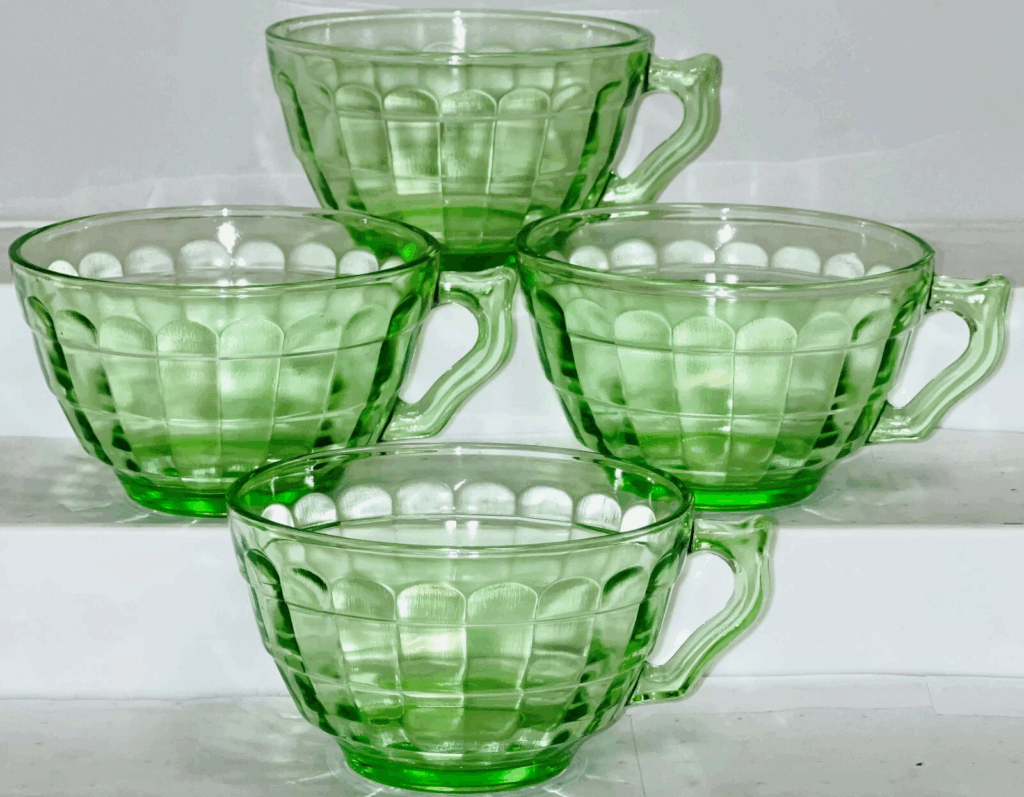
Produced from 1929 to 1933, this pattern features vertical blocks that give it a textured look. The clear green color adds brightness to any glassware collection. Its sturdy design makes it both decorative and usable for special occasions. These tumblers are popular among collectors who enjoy adding variety to their shelves. Individual pieces generally sell for $30 to $45.
The glass reflects light in a way that makes it appear almost luminous. Many pair these tumblers with matching pitchers for a complete vintage set. The green Block Optic design remains a symbol of Depression-era charm and creativity. It fits easily into both casual and formal table settings. Collectors often treasure them for their color and balanced proportions.
Blue Royal Lace Plate by Hazel-Atlas Glass
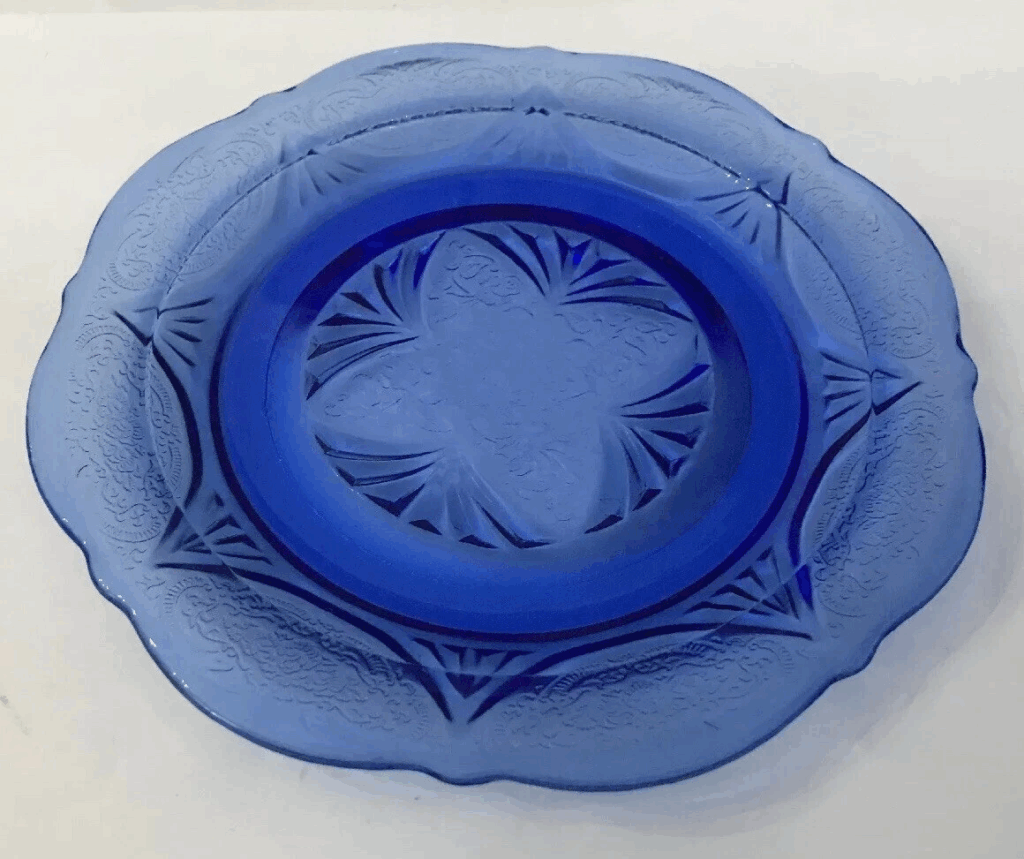
Produced between 1934 and 1941, the Royal Lace pattern is cherished for its deep blue color. The design features lace-like etching that gives the plate a delicate yet detailed appearance. Its cool tone brings a refreshing pop of color to display shelves. These plates often appear in both casual and formal vintage collections. The current market value typically ranges from $50 to $75 each.
Collectors often remark on how well this plate retains its color even after decades. The Royal Lace series includes bowls, cups, and platters, making it easy to build a full set. Many consider it one of Hazel-Atlas Glass’s finest works. It remains a sought-after design for those who appreciate vintage artistry. When placed under good lighting, the glass produces a stunning soft blue reflection.
Amber Patrician Spoke Dinner Plate by Federal Glass
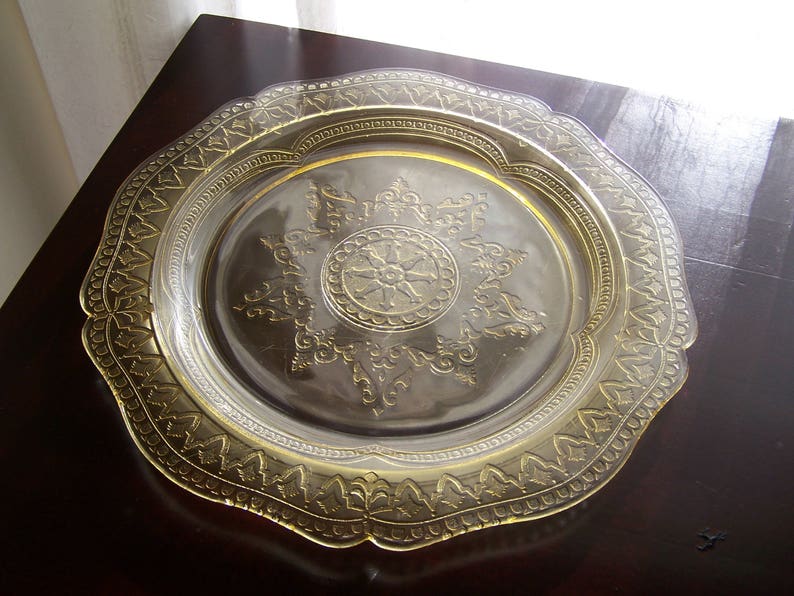
Introduced between 1933 and 1937, the Patrician Spoke pattern is recognized by its detailed rim and sunny amber shade. The glass carries a warm glow that fits well in vintage-themed displays. Its circular design resembles a sunburst, which enhances its charm. Collectors appreciate its balance between simplicity and beauty. A single plate usually sells for around $25 to $40.
This piece often anchors larger Depression glass collections due to its versatility. The amber tone pairs nicely with both darker and neutral surroundings. It holds a sturdy feel, reflecting the quality standards of its time. Sets in excellent condition tend to draw higher prices from buyers. The Patrician pattern remains a timeless favorite for collectors and decorators alike.
Pink Sharon Cabbage Rose Cup and Saucer by Federal Glass
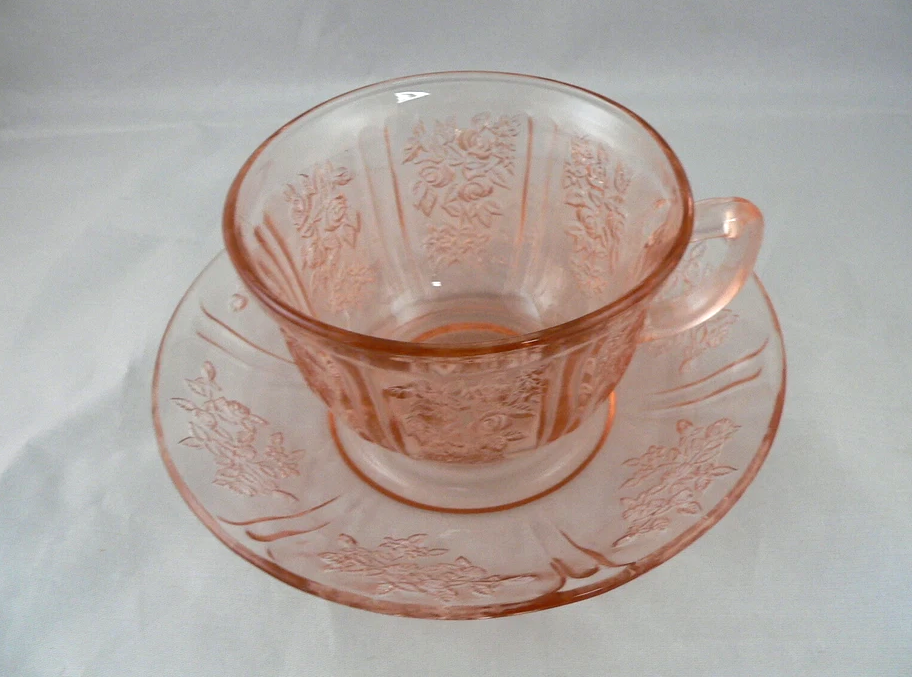
Made from 1935 to 1939, the Sharon Cabbage Rose pattern is recognized by its raised rose motif. The pink tone gives it a soft, romantic look that complements other vintage glassware. Collectors often use these sets for display or tea-themed arrangements. Their floral designs make them stand out among Depression glass lines. Each set generally sells for $35 to $60.
These pieces bring a gentle feminine touch to dining displays or cabinets. The saucer’s texture and the cup’s clarity create a lovely visual balance. Collectors enjoy the way they look grouped with other pink or clear glass. The design represents the elegance of everyday glassware from the 1930s. Many consider it one of the prettiest patterns of its time.
Green Cameo Ballerina Salad Plate by Hocking Glass
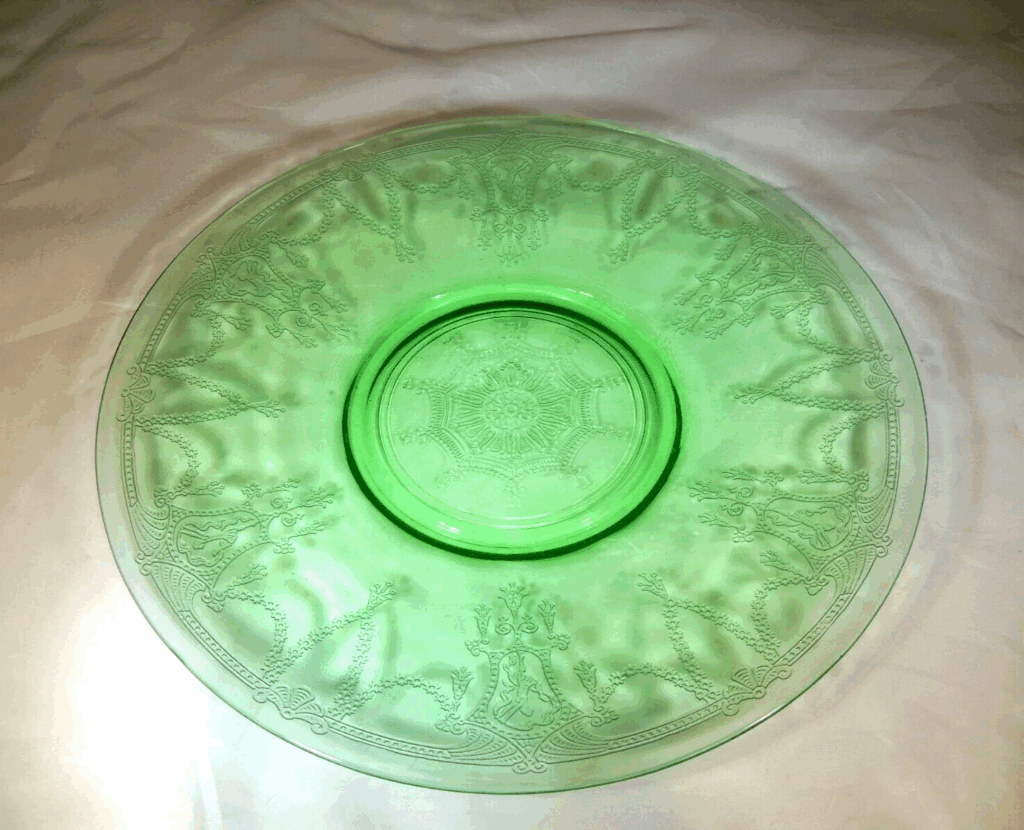
This popular pattern, made between 1930 and 1934, features a graceful dancing figure. Its translucent green hue remains one of the most admired shades among collectors. The plate’s design adds a hint of elegance to any display. It is lightweight yet durable, reflecting the care in Depression-era production. Market prices usually fall between $40 and $70 per piece.
Collectors appreciate the nostalgic charm that the Ballerina figure brings to their displays. The plate’s smooth edges and balanced design make it an easy match with other vintage items. It often serves as a conversation piece due to its unique pattern. Many choose to display it upright in glass cabinets to highlight its detail. The Cameo plate continues to represent grace and artistry in Depression glass.
Amber Dogwood Cup by MacBeth-Evans Glass
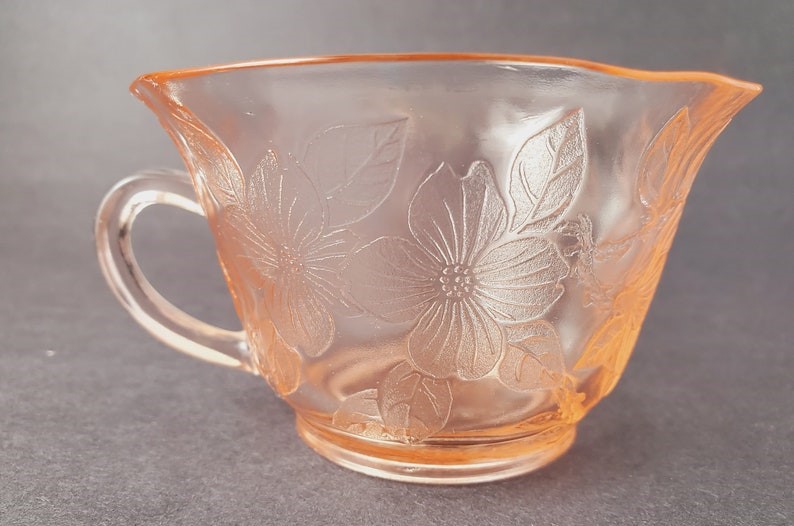
The Dogwood pattern, created between 1929 and 1932, is admired for its floral motif. The amber tone gives it a warm appearance that stands out among other pieces. Collectors love how the design captures natural light to create a cozy atmosphere. The glass remains relatively rare, adding to its collectible value. A single cup can be worth between $35 and $55.
These cups often complete tea or breakfast sets from the same line. Their smooth finish makes them pleasant to hold and display. The floral design brings a sense of nature-inspired beauty to any table. Many collectors display Dogwood pieces as part of larger Depression glass collections. Their timeless design continues to appeal to those who love vintage tableware.
Pink American Sweetheart Plate by MacBeth-Evans Glass
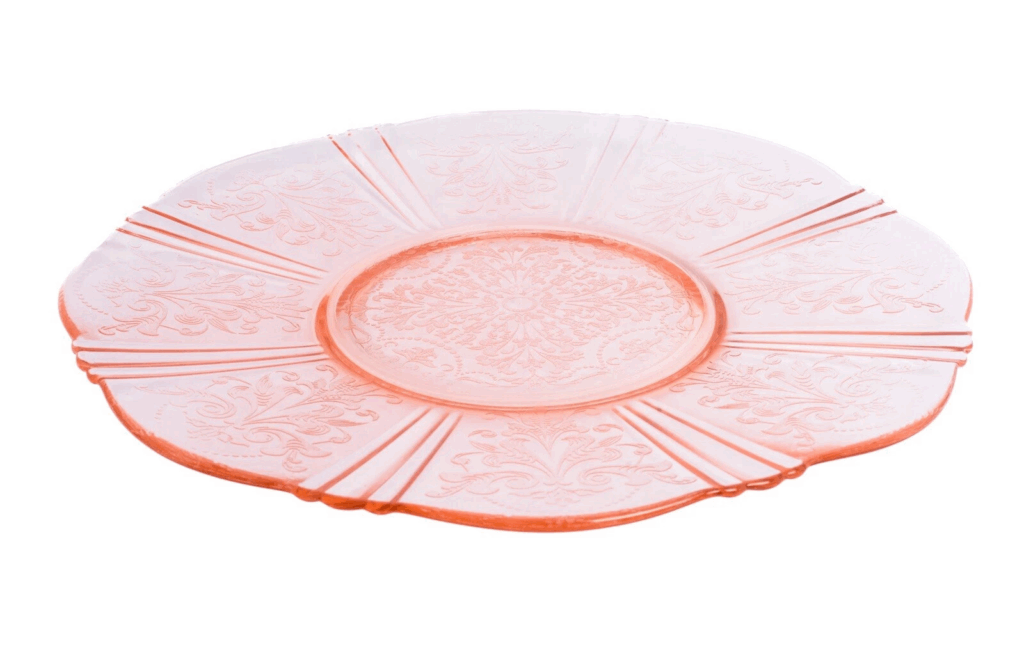
The American Sweetheart pattern was made from 1930 to 1936 and is easily recognized by its lace-like edges. Its pink hue gives it a light, airy appearance. The pressed pattern features curved designs that glow beautifully when displayed under natural light. Many collectors value it for its delicate charm and vintage appeal. Market value for a single plate falls between $40 and $65.
Collectors often use this dish to bring a soft accent to vintage shelves or dining setups. Its lightweight feel and smooth surface make it a joy to handle. The color remains bright even after many decades. American Sweetheart remains a favorite for those who enjoy classic designs with subtle detail. Its timeless look continues to make it a highlight in many Depression glass collections.
Pink Windsor Diamond Tumbler by Jeannette Glass
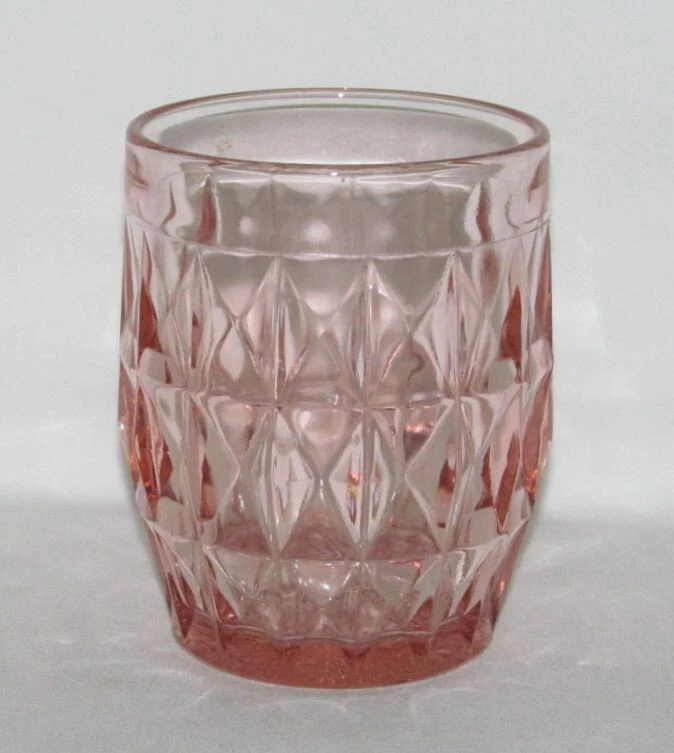
Made between 1936 and 1946, the Windsor Diamond pattern features raised diamond textures that sparkle beautifully in the light. The pink tint adds a soft, feminine touch that complements other pastel-colored pieces. It is often collected for its sturdy structure and eye-catching surface. Many collectors display it in glass-front cabinets to highlight its detail. These tumblers sell for about $30 to $50 each.
Collectors appreciate their versatile use as both display pieces and functional glassware. The diamond pattern gives them a unique visual appeal compared to smoother designs. Their color fits nicely in vintage-themed interiors. Matching sets can command higher prices due to their limited production. The Windsor Diamond tumbler remains one of Jeannette Glass’s standout Depression-era items.
Green Miss America Plate by Hocking Glass
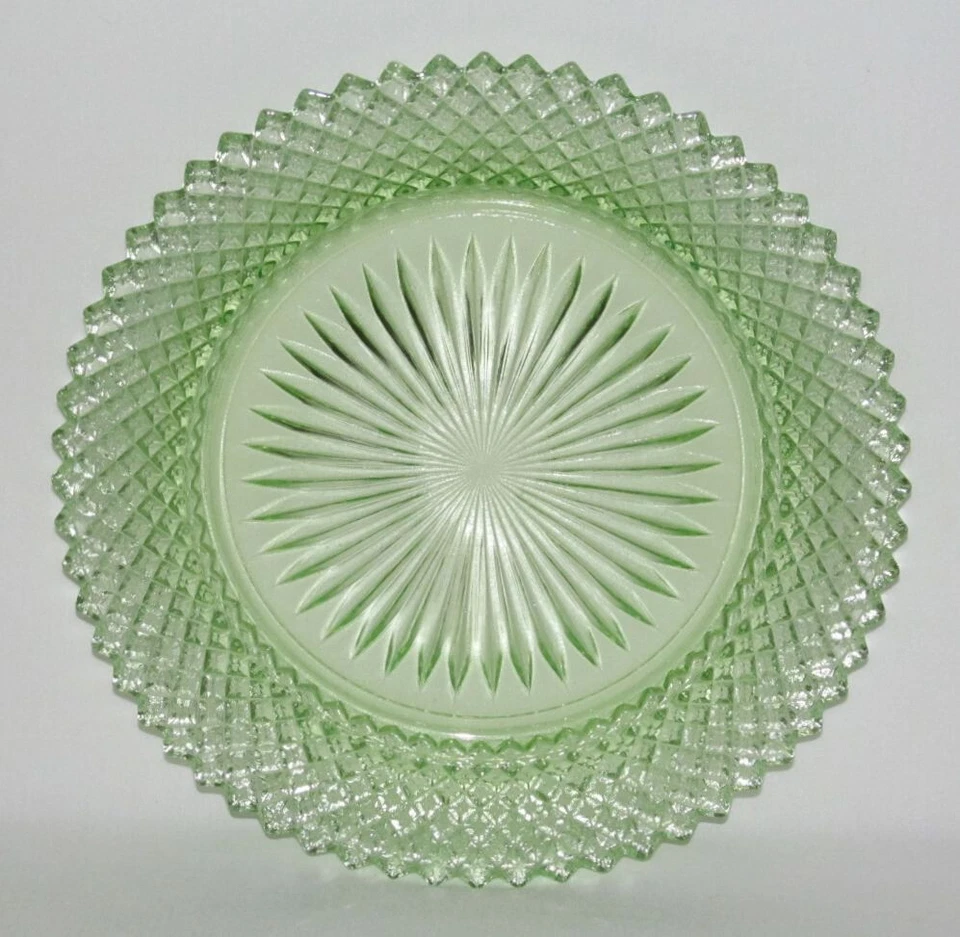
Produced from 1935 to 1938, the Miss America pattern is famous for its radiating diamond design. The green shade adds brightness that draws attention in any setting. Its pattern reflects light beautifully, making it ideal for display purposes. Collectors admire how it combines clarity with visual texture. The market value for this plate typically ranges from $40 to $70.
This plate’s design represents the optimism of its era, showing how artistry endured during hard times. It pairs well with other Depression glass in matching hues. Many collectors arrange them in sets to form elegant table displays. The pattern remains easy to identify and highly collectible today. Miss America glass continues to brighten shelves and tables wherever it is displayed.
Depression glass continues to capture attention with its mix of color, texture, and old-fashioned charm. Its unique patterns and luminous hues make it more than just a collectible, but a piece of living history.
This article originally appeared on Avocadu.
